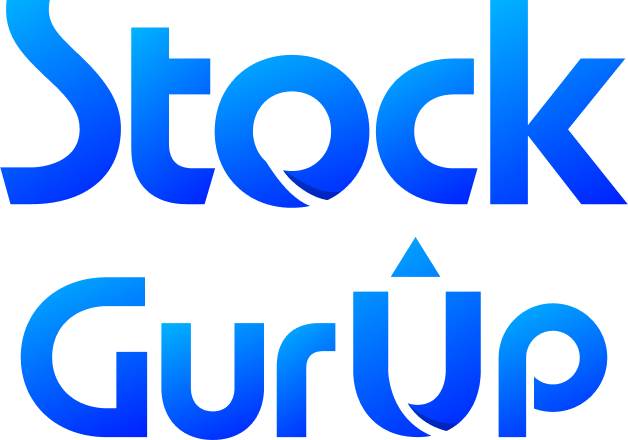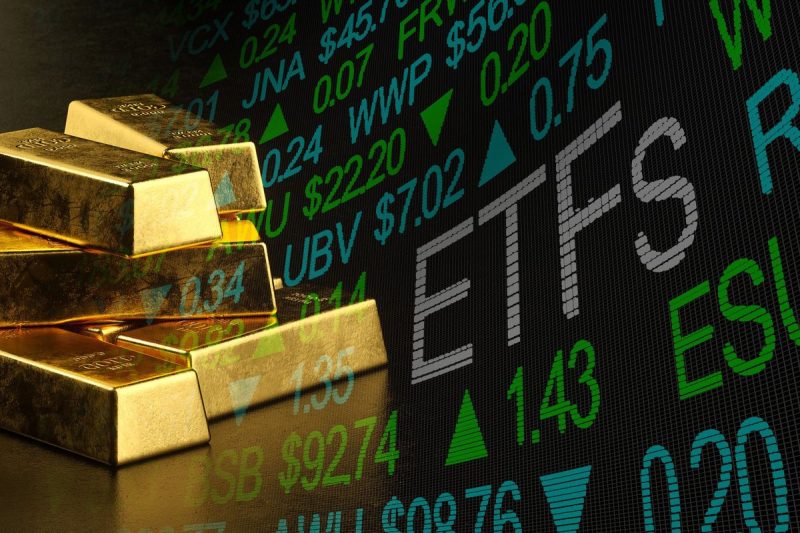Gold exchange-traded funds, or gold ETFs, have risen in popularity among investors who want precious metals exposure.
ETFs are similar to mutual funds in that they track assets such as stocks, bonds, currencies or commodities; a key difference is that ETFs can be bought and sold on exchanges, making them widely accessible. They provide considerable flexibility in implementing various investment strategies and in building investment portfolios.
Like other ETFs, gold ETFs are traded in the same manner as individual stocks, meaning that investing in the gold ETF market is similar to trading a stock on an exchange.
There are two main types of gold ETFs: those that track the gold price and those that hold investments in gold companies.
ETFs that follow the gold price give investors access to the yellow metal by holding either physical gold bullion or gold futures contracts. It is important to keep in mind that investing in the majority of gold ETFs does not allow investors to own any physical gold — in general, even a gold ETF that tracks physical gold cannot be redeemed for actual gold, although there are a few exceptions to that. One more thing to keep in mind is that gold ETFs that hold physical gold are taxed as collectibles in the US, giving them a higher maximum capital gains rate, which is worth noting for investors in the highest tax bracket.
The other type of gold ETF invests in gold companies, providing exposure to gold-mining, development and exploration stocks, as well as gold royalty stocks.
Read on to learn about the benefits of adding gold ETFs to your portfolio, the five largest gold ETFs by total assets and popular gold mining ETF options.
What are the benefits of gold ETFs?
Gold ETFs are fairly common today, and are a good choice for investors who want to invest in precious metals without trading gold futures or owning physical gold, such as gold coins or bars.
But gold ETFs are often considered a lower-risk investment, as they have a number of benefits for market participants and can open up a portfolio to diversification.
For example, physical gold is known for being a hedge against economic and political uncertainty, and owning shares of a gold ETF that offers exposure to the gold spot price provides investors with this same security without the hassle of buying and storing the yellow metal.
Since gold tends to rise when the US dollar is weak, purchasing a gold ETF could balance out any investment that has the potential to decline when the greenback does. Conversely, selling gold ETF holdings can be beneficial when the US dollar is making gains.
Gold ETFs that track gold companies give investors exposure to multiple companies in the space rather than having to choose specific stocks. This is an appealing option for those who want exposure to the sector without carrying the risks of investing in an individual stock.
Gold ETFs as a whole also offer security in that they are managed by yellow metal experts, so there is a better chance of making a profit than going it alone. Of course, it is important to keep in mind that, despite their less risky nature, gold ETFs are still affected by the rise and fall of the gold price.
Mutual funds are often compared to ETFs, but due to the fact that mutual funds can only be bought or sold at the close of the trading day, gold ETFs become more beneficial as they can be traded whenever the stock market is open, meaning movement is more liquid and not tied down by end-of-day trades.
5 biggest gold ETFs in 2024
So which gold ETFs are the best? And which ones will provide long-term capital gains? It depends on the investor and their investment objective, but the five gold ETFs below may be worth considering when it comes to getting exposure to the yellow metal. According to ETFdb.com, they were the largest gold ETFs by total assets as of August 17, 2024. The five largest gold ETFs all track the gold price, but investors also interested in gold mining ETFs can also learn about the most popular options after this list.
1. SPDR Gold Shares (ARCA:GLD)
Total assets: US$68,640.4 million
The SPDR Gold Shares tracks the spot price of gold bullion and is determined by market forces in the 24 hour, over-the-counter market for gold. This market accounts for most global gold trade, and any quoted prices available to ETF investors reflect the latest available information.
Physical bullion comprises 100 percent of the ETF’s holdings, and its expense ratio is 0.4 percent. It offers investors a way to invest in gold that is much less costly than purchasing, storing and insuring bars or coins.
2. iShares Gold Trust (ARCA:IAU)
Total assets: US$29,076.8 million
Like the SPDR Gold Trust, the iShares Gold Trust aims to track the spot price of gold bullion. Its expense ratio is 0.25 percent, and its holdings are allocated entirely to physical gold bullion. The aim is for the trust’s value to reflect the performance of the price of gold.
The physical gold the trust holds is in vaults in New York, Toronto, London and other locations. Investors can purchase and sell shares through a traditional brokerage account throughout the trading day.
3. SPDR Gold MiniShares Trust (ARCA:GLDM)
Total assets: US$8,269.97 million
The SPDR Gold MiniShares Trust offers investors one of the lowest available expense ratios for a US-listed ETF backed by physical gold at 0.1 percent. This ETF represents fractional, undivided beneficial ownership interests in the trust, which holds only physical gold bullion and, from time to time, cash.
4. Abrdn Physical Gold Shares ETF (ARCA:SGOL)
Total assets: US$3,459.79 million
The Abrdn Physical Gold Shares ETF is issued by the abrdn Standard Gold Trust and has an expense ratio of 0.17 percent. The trust aims for shares to reflect the performance of the gold bullion price, minus the trust’s operating expenses, by holding 100 percent physical gold bars.
The gold that the abrdn Standard Gold Trust owns is held in Zurich, Switzerland, and it conforms to the London Bullion Market Association’s rules for good delivery.
5. iShares Gold Trust Micro (ARCA:IAUM)
Total assets: US$1,340.55 million
iShares Gold Trust Micro ETF is the lowest-cost physically backed gold ETF on the market, as its expense ratio is just 0.09 percent. The fund is designed to provide exposure to the day-to-day movement of the price of gold bullion. The underlying gold bars are held in vaults.
Gold mining stock ETFs
There are several options for ETFs that hold gold mining companies instead of physical gold. For investors looking to gain exposure to gold companies without the risk of holding individual stocks, these are two popular options:
Securities Disclosure: I, Lauren Kelly, currently hold no direct investment interest in any company mentioned in this article.

